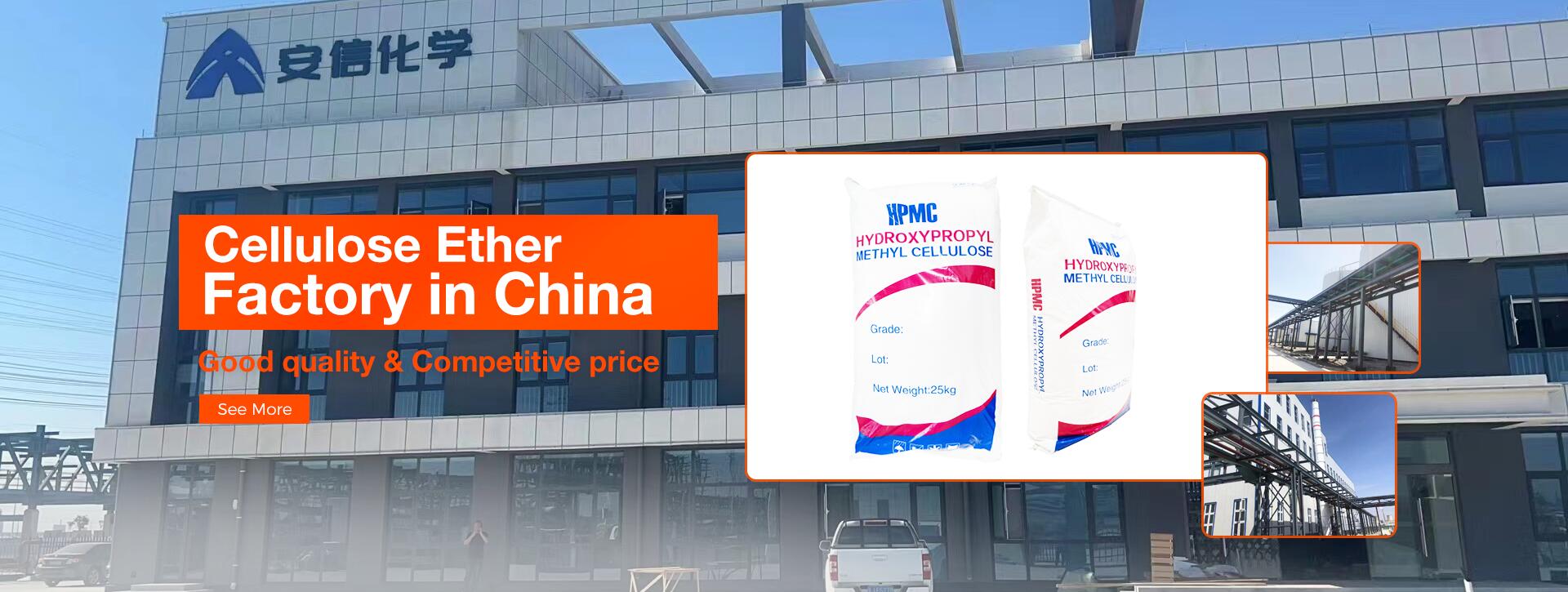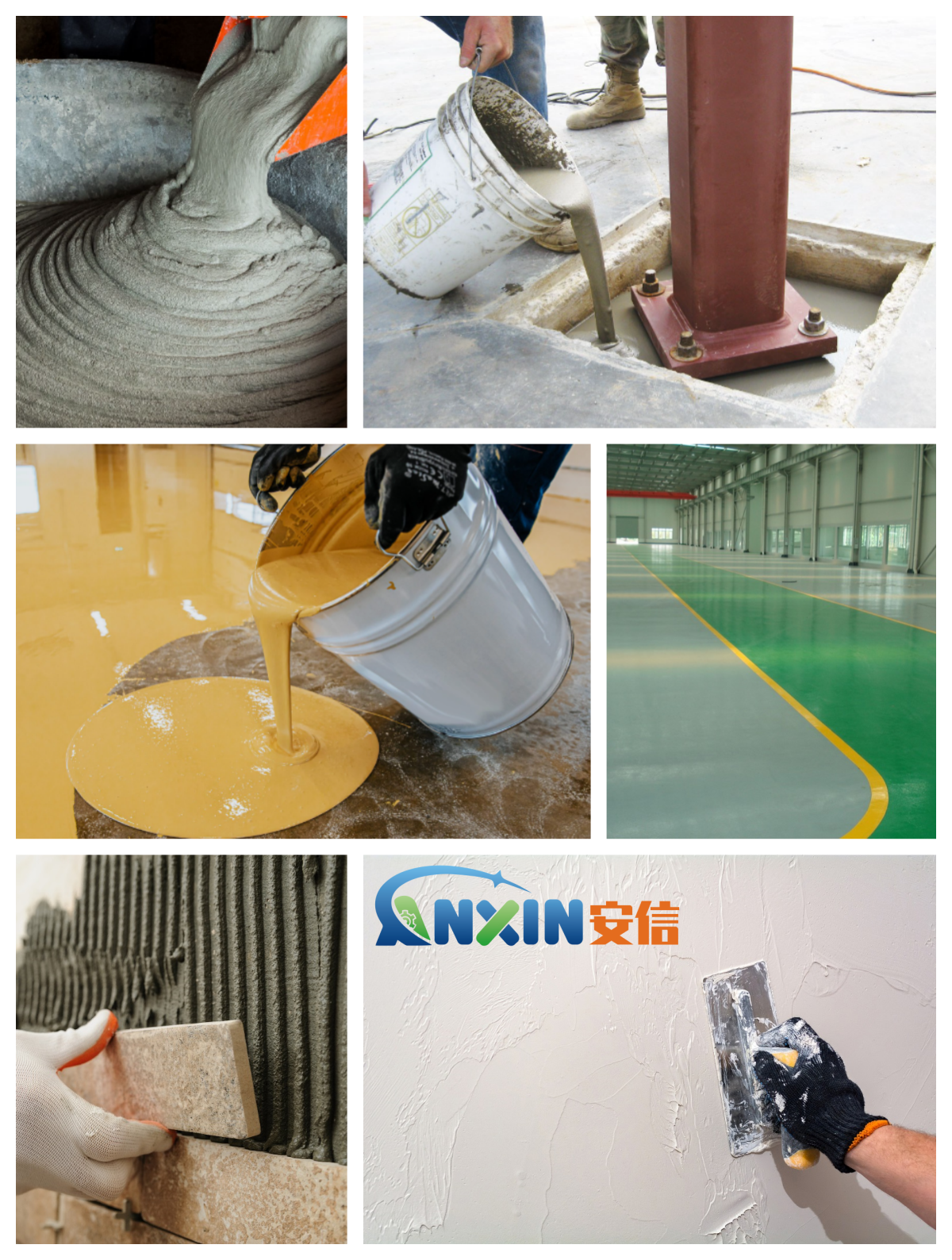Hydroxypropyl Methylcellulose (HPMC) is a non-ionic cellulose ether made from natural polymer materials through chemical modification. Due to its excellent water retention, thickening, construction, adhesion and safety and environmental protection performance, it is widely used in the construction industry and has become a key additive in dry-mixed mortar, tile adhesive, self-leveling mortar, plastering mortar, putty, insulation system and other materials.
1. Application in dry-mixed mortar
HPMC is an indispensable additive in dry-mixed mortar and can significantly improve its construction performance. Its main functions include:
Water retention: HPMC has excellent water absorption and water locking ability, which can delay the volatilization of water from the mortar, ensure the full hydration of cement, improve the strength of the mortar, and reduce the risk of cracking.
Thickening effect: Enhance the consistency of the mortar, improve the construction performance, make the mortar easier to apply and shape, and improve the sag resistance and anti-sagging performance.
Improve working performance: Enhance the adhesion between mortar and base layer, making it easier to spread on the wall or floor, and improve work efficiency.
2. Application in tile adhesive
The role of HPMC in tile adhesive is equally important:
Enhance adhesion: Improve the wettability of tile adhesive, so that it can better penetrate and adhere to the substrate and the back of the tile.
Improve slip resistance: HPMC enhances the consistency and adhesion of the adhesive, making it difficult for tiles to slide down during the pasting process, and improving the construction performance of vertical paving.
Extend open time: Improve the operability time of tile adhesive, allowing workers to adjust and lay for a longer time, and improve construction flexibility.
3. Application in plastering mortar and putty
In plastering mortar, interior and exterior wall putty powder, the main functions of HPMC include:
Water retention and anti-cracking: Improve the water retention of mortar in high temperature or dry environment, and prevent rapid water loss from causing cracking or hollowing.
Improve construction performance: Increase the lubricity and fluidity of mortar, making the application smoother and the surface smoother.
Delay cracking: Improve adhesion and flexibility, adapt to deformation of the base layer, and reduce cracking problems caused by unstable base layer.
4. Application in self-leveling mortar
Self-leveling mortar is mainly used for ground leveling, and has extremely high requirements for fluidity and construction performance. The addition of HPMC can:
Enhance fluidity: Although HPMC itself has a certain thickening effect, its reasonable amount can provide good fluidity while maintaining moderate consistency.
Prevent segregation and water seepage: Improve the stability of the mixture, prevent the stratification of aggregates and cement slurry, and improve the surface quality after construction.
Control the setting time: Give construction workers enough time to operate and improve the overall quality of the floor.
5. Application in thermal insulation mortar and external insulation system
In EPS thermal insulation mortar, interface agent, and bonding mortar, HPMC plays the following roles:
Improve bonding performance: Enhance the bonding strength between the insulation board and the base layer to prevent falling off.
Anti-slip: Provide good anti-sagging ability in wall construction to ensure that the insulation board does not slide down after being fixed.
Water retention promotes cement hydration: effectively promotes the complete hydration of cement components and enhances the overall structural stability of the system.
6. Environmental protection and safety
HPMC is derived from natural plant fibers and is made through physical and chemical modifications. It does not contain harmful substances, is non-toxic and odorless, and meets the environmental protection standards of buildings. It is non-irritating to the human body and non-polluting to the environment during the construction process, which is in line with the concept of green building.
Hydroxypropyl methylcellulose, as a high-performance building additive, is widely used in mortar, putty, tile adhesive, self-leveling, insulation system and other fields. Its core value lies in improving water retention, improving construction performance, enhancing bonding strength and improving overall durability. As building materials develop towards energy saving, environmental protection and high performance, the importance of HPMC in the construction industry will become more and more prominent, and it will become a key auxiliary agent to promote the development of modern construction technology.
Post time: Jun-26-2025








